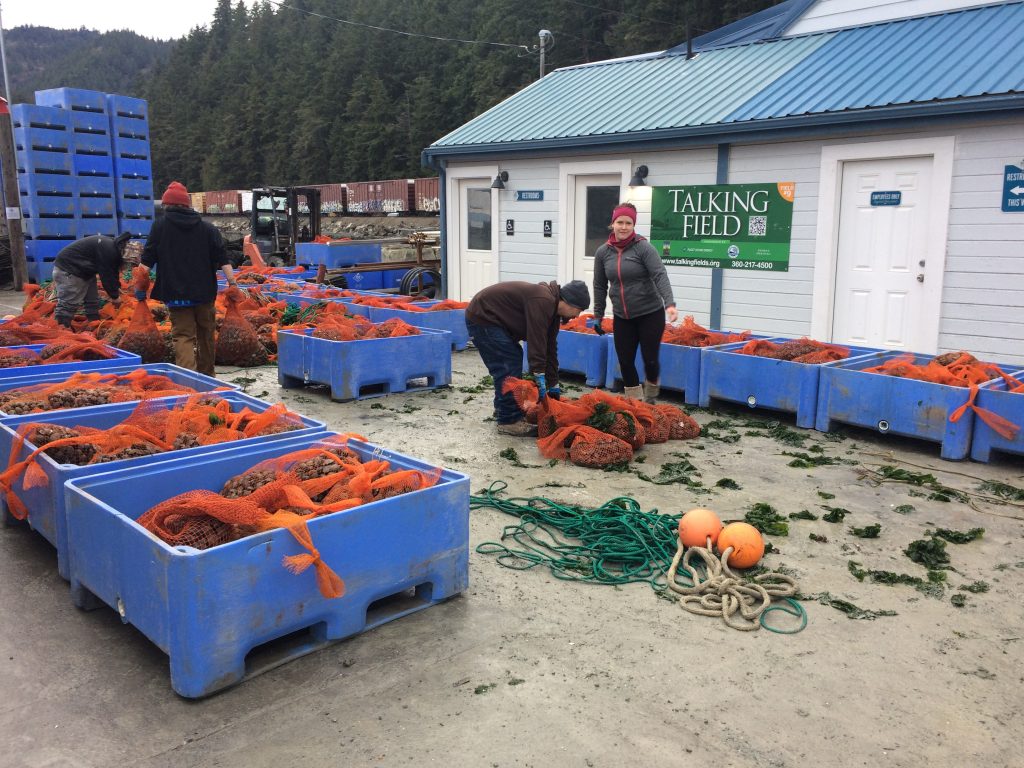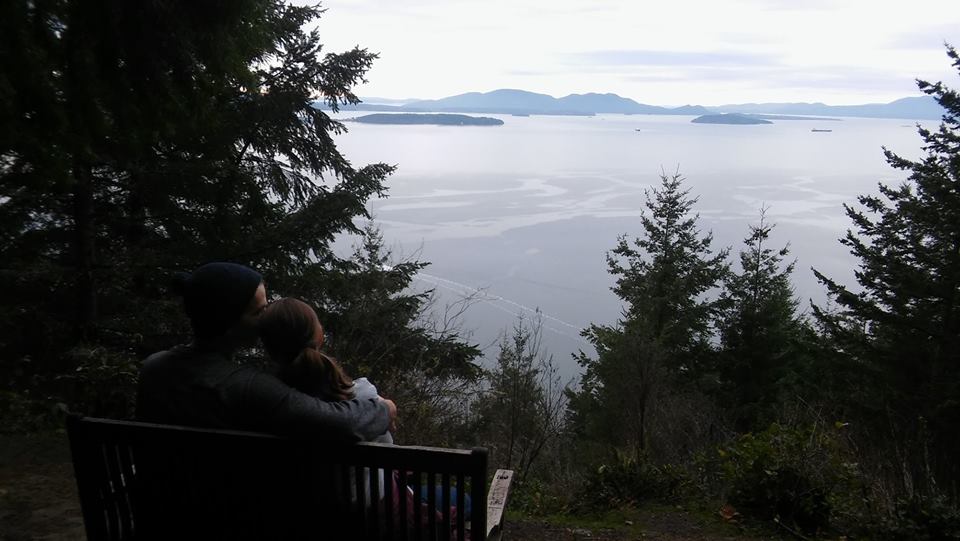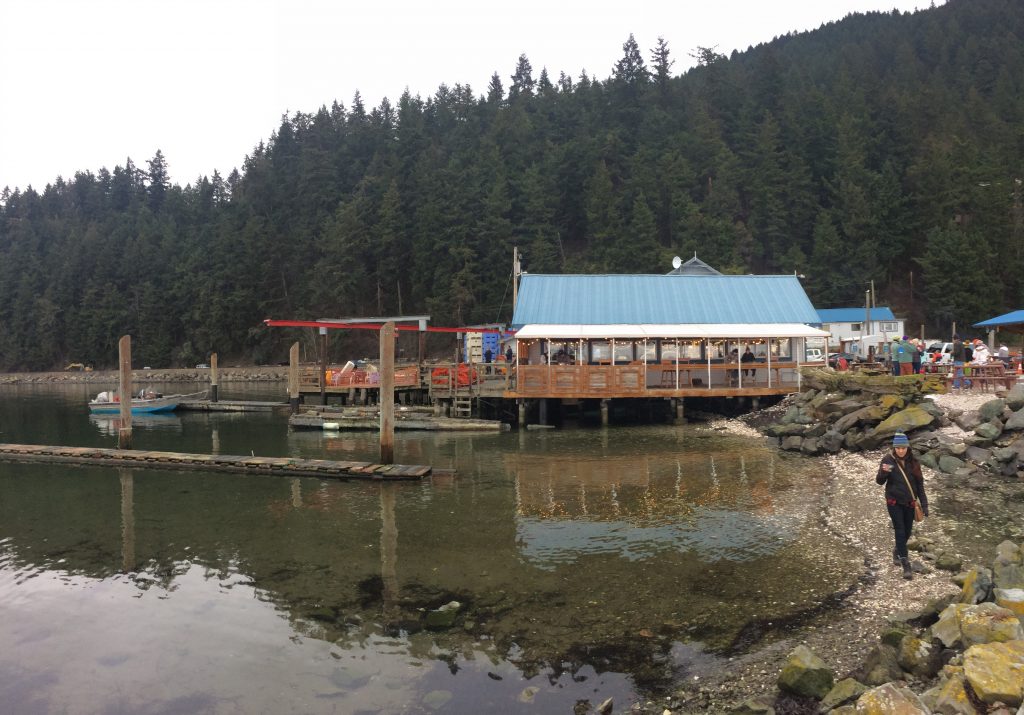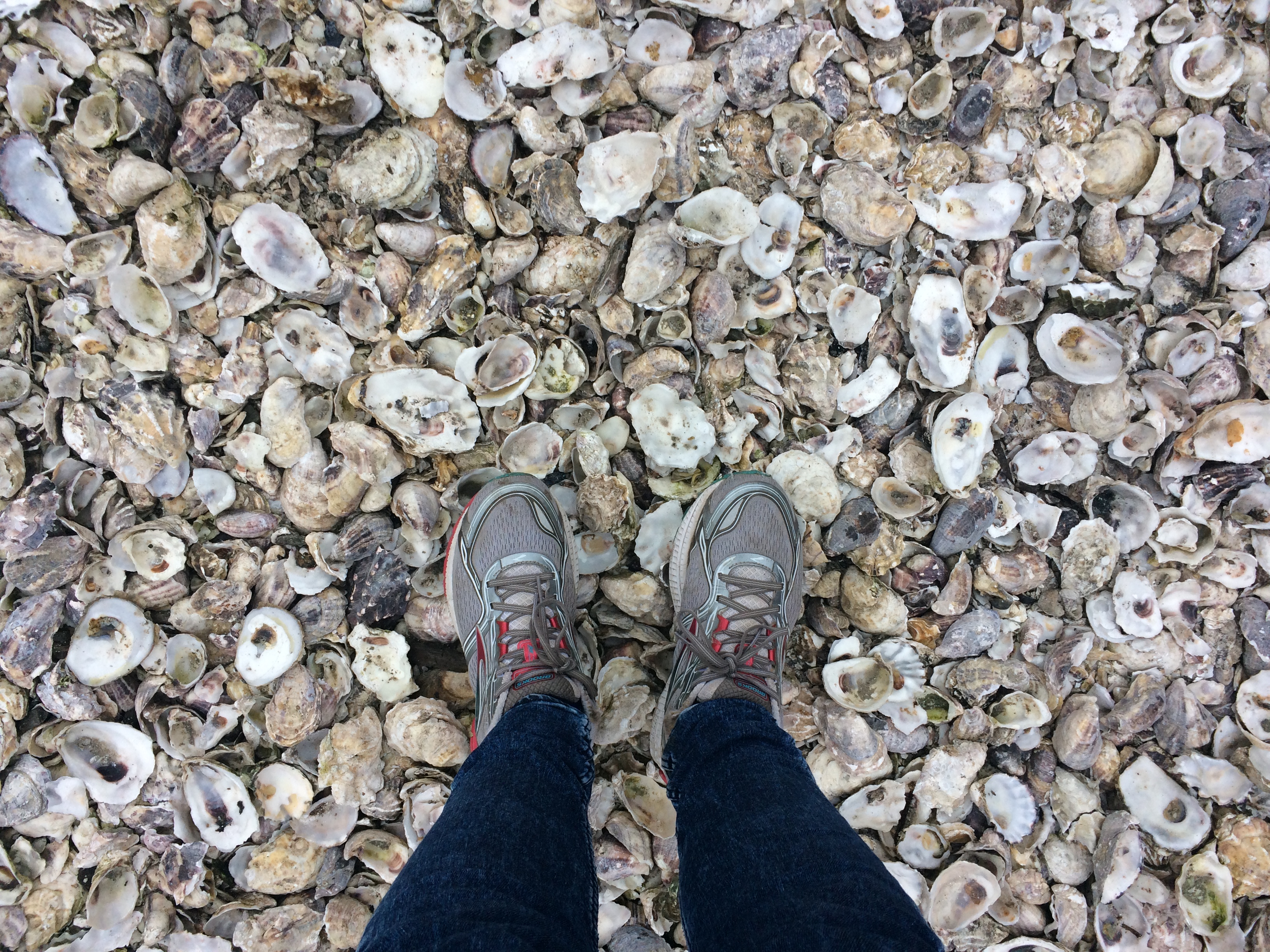One of my fiance‘s best friends came into town to meet me last weekend. I was nervous about the visit–first impressions are stressful for most people, I assume–but I quickly realized we had plenty in common. Including, it turns out, a goal to live sustainably. I was pleased to learn that she also reads this blog (Hi, Jenny!), which meant I didn’t have to make some vague blanket statement about some of my weirder zero waste habits.
It also meant that one of the items on her PNW bucket list could be successfully fulfilled without deterring my involvement: Jenny wanted to eat fresh oysters.
The Pacific Northwest is known for its seafood. From throwing fish across Pike Place Market to eating delicately prepared sushi in a five star restaurant, it’s hard to beat Seattle if you’re looking for fresh fish in North America.
I normally don’t eat seafood.
For some reason, there’s no word for someone who will eat nearly everything except fish, so I’m going to propose “Land Omnivore” for posterity.
The reason I’m a land omnivore is because wild fishing is one of the least sustainable sources of protein in modern culture (for more information, see the links at the bottom of this article). Supply simply can not fit the demand. However, my fiance quelled my apprehensions by explaining that he was taking us to a sustainable oyster farm.
Oysters fall into this weird agricultural category between plant and animal.
In the same paradoxical way that you can feed insects to a carnivorous plant, you can grow oysters by providing them with the right environment. They take minimal energy to “plant” and grow in a contained area, and they even work as the ecosystem’s water filter. Thus businesses like Taylor Shellfish Farms can provide delicious oysters without destroying the environment.
In fact, oyster businesses have a reason to keep the water and its ecosystem healthy. Oysters taste better in clean water because they take on the flavors of the water around them. It never hurts to have commerce on your side when attempting to save the Earth.

Oysters also take minimal waste to prepare, serve, and eat (especially raw). As Nathan gleefully explained about Taylor Shellfish’s shell policy “When you’re done eating them, you just throw the oyster shells on the ground!” There’s something about throwing food remnants on the floor that gets us in touch with our inner child–or perhaps our inner Medieval Times alter ego. Fun for the whole family, even if you’re not zero waste.
It all sounded a little too good to be true.
But as we drove north of Seattle, its absurd beauty reminded me that this is the place I moved to in order to see my dreams come true. Anything can happen. You’re driving across a flat stretch of land, you look out the car window and comment on how beautiful the mountains look today, only to learn as the road goes above sea level that those mountains in the distance are actually islands jutting out of The Sound. Leave your assumptions in the driveway, including the idea that sustainable seafood can’t exist.
A few hours of driving later, we arrived. But before we went to the restaurant, we went for a hike.
You can’t go anywhere outside of Seattle without a good hike.
While this isn’t essential for the zero waste seafood experience, I try not to pass up an opportunity to get close to nature. There’s no better reminder for why the Earth is worth saving than a good view. Plus The Oyster Dome trail was the perfect opportunity to work up an appetite.

In fact, it was so perfect I didn’t believe the oyster bar could top it. Boy was I wrong.
We arrived at Taylor’s Shellfish Farms and were introduced to seven types of oysters by a man behind the counter. After a few recommendations, he loaded up three trays’ worth of oysters with a few lemon slices and a tiny bottle of Tabasco sauce and sent us on our way.
We sat at one of the many tables set up along a beach of oyster shells. Each table was equipped with two shucking knives. I now understand that the cost of a standard platter of oysters at a restaurant is partially due to the labor of opening them. But we eventually got the hang of it.
There’s something innately satisfying in shucking oysters before eating them. Maybe it makes you appreciate what you’re eating more than eating food that’s prepared for you. When I looked up after slurping down a Fat Bastard (yeah, that’s the oyster’s real name), the waves, the trees, and even the air seemed greater than they were before.
I’m not the first person to make this observation, but it stands true to my experience: connecting yourself to the food chain makes you grateful for the food you eat, the nourishment it provides, and the energy you gain from it. Some people do this by saying grace, some people farm, others shuck oysters.

Our trip to Taylor’s Shellfish Farms reminded me why being zero waste has been a permanent lifestyle choice. It’s not just about reducing your trash (or feeling better than other people because of it). It’s also because questions like “Where do you find sustainable seafood?” can lead to new experiences…and pretty epic adventures.
Learn more about:

aaah I am still thinking about how good those oyster were…
(wipes drool from mouth)